Below is an application story I contributed to the February issue of tED Magazine. Reprinted with permission.
According to the American Library Association, there are nearly 120,000 libraries in the United States, including school (82 percent), public (8 percent), and other (10 percent) libraries. These buildings feature a variety of spaces and tasks as use of their use has changed. Today’s libraries offer books and artifacts, digital content, computer and Internet access, wireless communications, and a place to meet. A variety of spaces impose common and particular lighting requirements, including entrances, lobbies, retail, office, display, services, multipurpose rooms, and exterior areas.
As library usage shifts to e-books, Internet, and digital content, there is less demand for publicly accessible storage areas. Nonetheless, the most popular type of space remains storage of book collections, called the library or book stack. In typical school and public libraries, this storage takes up 30 to 50 percent of usable floorspace, even more in other library types.
This article describes considerations and techniques for designing book stack lighting, based on the Illuminating Engineering Society’s (IES) RP-4-13, Recommended Practice for Library Lighting.
The library stack
A library stack is a collection storage as opposed to a reading area. In these areas, books are typically stored in shelving units that are often 3 feet wide, 1 foot deep, and 3 to 7.5 feet tall, according to IES. These shelving units connect to form ranges, separated by aisles that are at least 3 feet wide for browsing and 44 inches wide for major circulation and egress paths.
Typically, shelving is vertical, though angled shelves, carrousels, bins, and drawers may be in use for special materials and presentation of books. For older or lesser-used materials storage, high-density storage systems such as rolling stack shelving may be used, in which shelving units rest adjoined and are separated via a floor or ceiling rail using a manual or mechanical method. If rare books and artifacts are stored, these materials may be sensitive to ultraviolet energy and heat produced by electric light and daylight sources, and therefore may need to be isolated.

Image courtesy of Eaton Corporation.
Lighting considerations
In the stack area, the two primary tasks are reading covers and spines on the shelves, requiring vertical illumination from as tall as 90 inches to as low as six inches off the floor; and reading selected materials, requiring horizontal illumination. IES recommends a minimum of about 10 to 40 footcandles of horizontal illumination on the floor and an average of about 15 to 60 footcandles 2.5 feet above the finished floor. IES further recommends about an average 10 to 40 footcandles of vertical illumination on the front face of the shelving 2.5 feet above the finished floor, with a minimum of about half that near the bottom of the shelving. The most desirable light level within these ranges depends on the predominant ages of users, as older people need more light. Regardless, the average-to-minimum vertical and horizontal light level uniformity should be at a 2:1 ratio. High-density book shelving and periodical shelving have similar light level recommendations; consult IES-RP-4-13 to learn more. For high-density book shelving, vacancy sensors can be used to reduce light levels (and save energy) during periods of vacancy during operating hours.
Book spines are typically darker color, resulting in IES estimating an overall reflectance in the aisle of 30 percent or less. As darker materials absorb light, this means a significant amount of light may be absorbed between the top and the bottom of the shelf. Some books are protected by glossy plastic covers, which reflect light and may create a veiling reflection (reflected light that obscures seeing the task) depending on the viewing angle.
Lighting design options
One of the most informative features of IES-RP-4-13 is a stack lighting matrix, which describes lighting design options based on ceiling and shelving height, along with advantages, disadvantages, and design considerations for each.
The options for lower ceiling heights (14 ft.), IES identifies two options, either shelving-mounted direct/indirect or a combination of shelving-mounted direct with ceiling-mounted direct or indirect luminaires.

Image courtesy of Eaton Corporation.
Below, three options for 9- to 14-foot ceilings are summarized:
• Suitable for 3- to 7.5-foot-tall shelving, suspended direct/indirect luminaires, mounted perpendicular to the shelving units, can provide good vertical lighting in the aisles while producing ambient room lighting. Lighting uniformity is improved, and luminaire spacing can be maximized. However, installing these luminaires in continuous rows may result in relatively high lighting power. The direct light component may be shielded to reduce direct glare, while wide direct distribution will improve light level uniformity.
• Suitable for 3- to 7.5-foot-tall shelving, suspended indirect luminaires, mounted perpendicular or parallel to the shelving, can eliminate glare while producing soft ambient lighting. However, as with direct/indirect, mounting in continuous rows may result in higher lighting power. This option is well suited when flexibility is required for future reconfiguration of the shelving layout, or when a reading zone is integrated into the stack area. The luminaires should be mounted as low as possible to maximize the uniformity of illumination on the ceiling and shelves.
• Suitable for 5.5- to 7.5-foot-tall shelving, direct/indirect luminaires mounted on the shelving can provide good vertical lighting in the aisles while eliminating dark areas and producing ambient room lighting. Locating continuous rows on each side of the range may demand more lighting power, and additional lighting may be needed in circulation aisles. Electrical distribution must be provided from the floor to the lighting, which requires coordination and may limit shelving placement.
As with any other lighting application, finding the right stack lighting option requires careful matching to the project characteristics and goals.
Library lighting
Libraries may be changing with the times, but their core role in communities remains the same—providing centers for arts, learning, community-building, and imagination. Using recommended practice, distributors can support their customers in recommending appropriate solutions for their projects.





You must be logged in to post a comment.